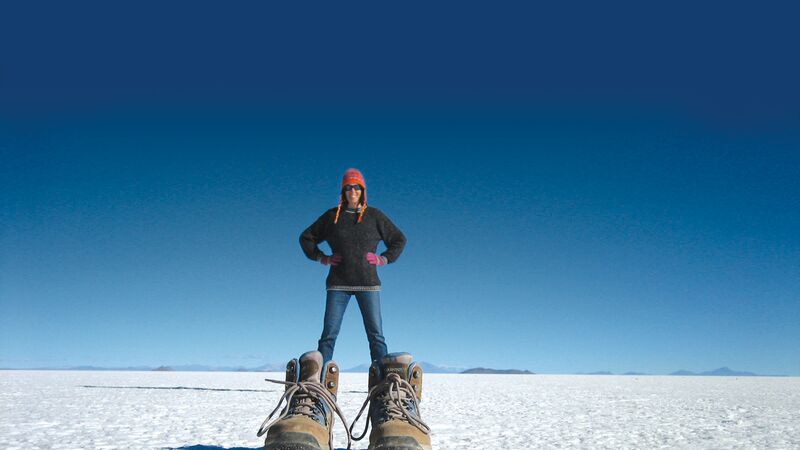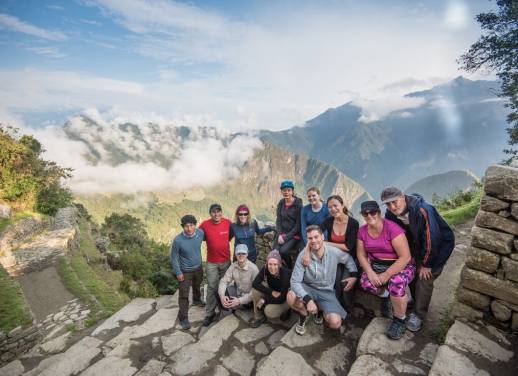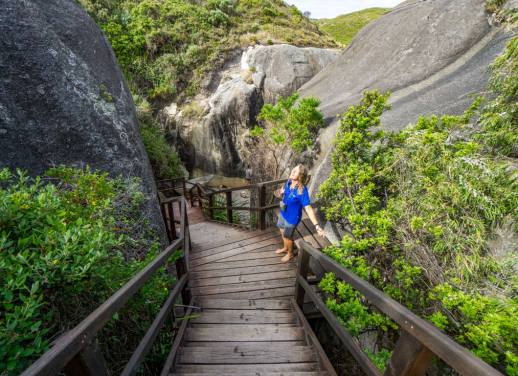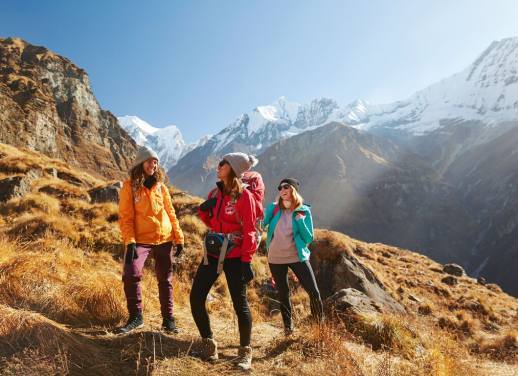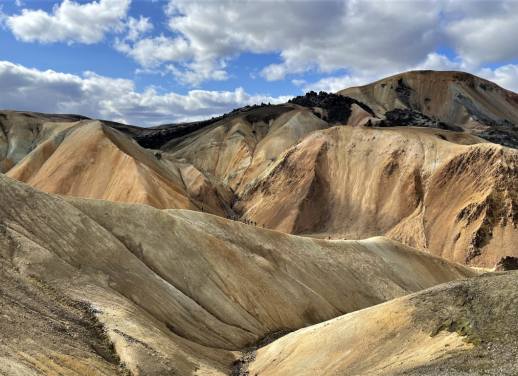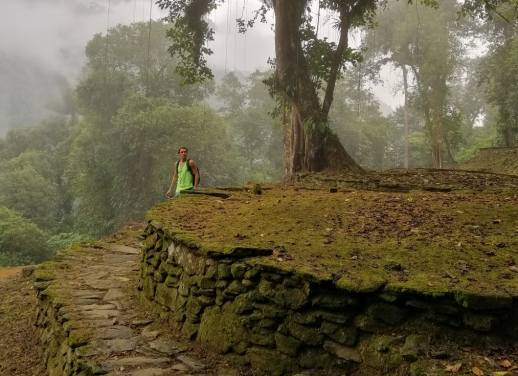No merino wool socks or band-aids will save your feet from unbroken-in boots, dear reader.
There’s nothing worse than a blister… okay, I can think of a few things, but blisters are up there. If you couldn’t finish a hike because your feet were a hot mess, I’m not sure which pain would be worse: the burning sensation of a raw blister or the mental agony of knowing you could’ve spent more time breaking in a new pair of boots.
Light hiking boots may feel great out of the box and require minimal break in time, while heavy-duty leather boots can take much longer. Regardless, it’s always best to err on the side of caution and put in the time to help your shoes adjust to your feet. There are no shortcuts, I’m afraid.
Here are a few tips and tricks to break in new boots for your hiking trip. Happy walking!
1. Get properly fitted boots
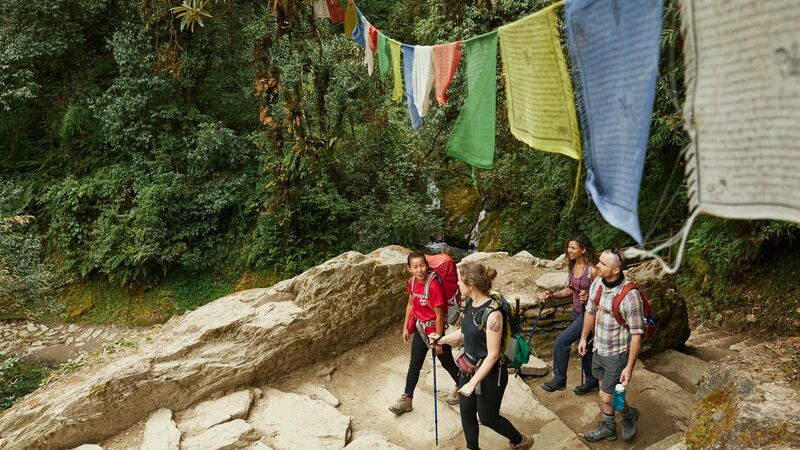
Before you do anything else, it’s imperative to buy boots that fit your feet properly. If they’re too big or small, you could walk 500 miles (listening to the Proclaimers, obvs), and they’ll never be any good. Online discounts may be tempting, but unless you’ve tried them on, you run the risk of ill-fitting boots. If you can, go to a hiking or outdoor shop to try a few different pairs in person, ideally with a shop assistant who can check the fit.
If you wear insoles, bring these along when you’re shopping, and make sure you wear the socks you plan on wearing on the hike.
Read more: What to pack for a hike – an essential checklist
2. Wear your boots around the house first
When you unbox your boots, it’s best to wear them around your house for a little while first. Wear them with the socks you intend to hike in, and ensure the tongues and gussets are straight and the laces are tied correctly. Aim for a couple of hours every day for a week or so.
Take note of how they feel. Are they a tad too tight around your toes? Are they slipping at the heel? Is there any pressure on the top of your foot? You can sometimes adjust your lacing technique to address any niggles and maximise comfort. If they’re rubbing or causing pain, you may need to return them and try a different pair (hence why you don’t want to wear them outside).
3. Go for walks
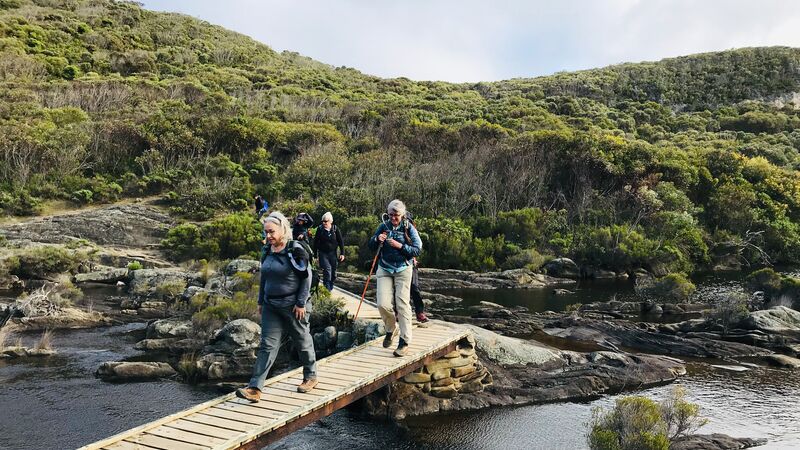
Now that you’ve kicked around the house in your boots, it’s time to stroll around your neighbourhood or walk the dog. Once you’re comfortable doing that, you’re ready to hit the trails. Aim for short walks that increase in distance each time, and try to cover varied terrain and a mix of up and downhill stretches.
Blisters may form in the first few outings (the heel and big toe are prime culprits) as the fabric softens and moulds to the unique shape of your feet. Don’t forget to bring tape or band-aids – or do this beforehand if you have sensitive skin.
4. Clean your boots after a hike
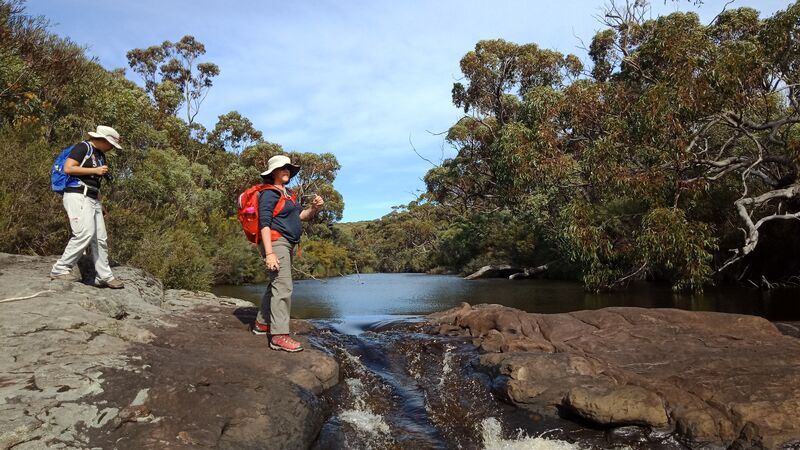
Forgetting to clean your boots or air them out properly can affect how they fit. Always scrub off mud and leave your boots outside to dry naturally (not by a heater or in direct sunlight). This will help them retain their shape. Waterproofing your boots will also keep your feet dry and prevent blisters. If you take care of your boots, you’ll enjoy a long and comfortable life on the trails together.
Read more: How to prepare your feet for a long hike
5. Be prepared for blisters anyway
Some of us are more prone to blisters than others. If you’re one of the unfortunate ones, you may want to invest in some blister socks. It’s always worth bringing moleskin tape and blister band-aids on a hike as blisters can still occur even if you’ve had your boots for years.
6. Don’t do anything weird
You’ll find all sorts of ‘advice’ online about how to break in boots quickly, but the only way to do it properly requires good old-fashioned TIME. In other words, don’t soak your boots in hot water, stuff them with water bags and put them in the freezer, or blow hot air on them with a hair dryer. Trust the process.
Itchy feet? Check out Intrepid’s range of walking and trekking trips.

